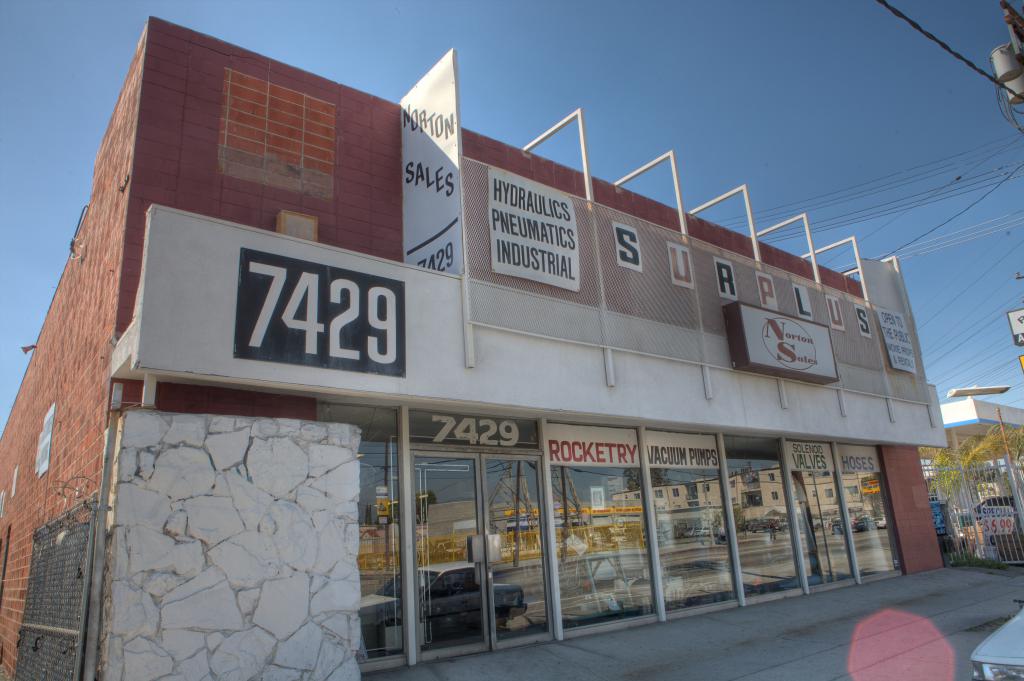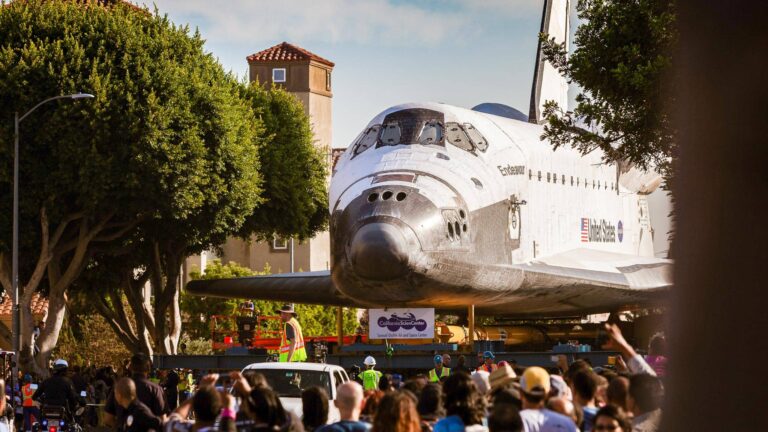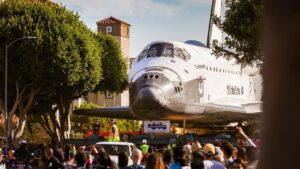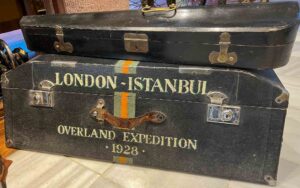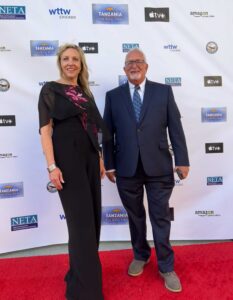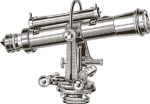Norton Sales is the home of Space Age Junk and Modern Collectibles. Serious rocketeers, NASA engineers, and Hollywood set designers come here for inspiration and surplus rocket parts.
My friend Robin took me on my first trip to Norton’s one hot day during the summer of 2004. Needless to say, I was hooked. It’s filled to the brim with spare aerospace surplus from the Apollo era and before. Carlos Guzman is the owner of Norton’s and an all-around good guy. I liked it so much that I pitched the story to WIRED Science, and we filmed a story here with Buzz Aldrin. If you’re looking for parts to build your own spaceship or if you’re looking for unique art supplies, Norton’s is the place for you.
WIRED Science Transcripts
“This is Norton sales, a salvage yard, and spare parts shop on a rough industrial strip in North Hollywood, California, owned by Carlos Guzman. It looks like the kind of junkyard you’d go to on a weekend afternoon to find a spare part for your Harley, but it’s also the kind of junkyard where you can find a spare control panel from Houston Mission Control, a shelf full of valves from a Saturn rocket, a fuel tank for liquid oxygen.
These were the kind of parts that went into the mighty Saturn five rockets that took men to the moon from the 1960s to the early 1970s. This summer, the USSpace and Rocket Center in Huntsville, Alabama, moved the last remaining Saturn 5 on earth from outside, where it had been rusting for the last 35 years, to a brand-new building. This is a big freakin rocket. It’s 36 stories from top to bottom; it’s the rocket that took Apollo astronauts to the moon.
But don’t think about it as a rocket. Think about it as thousands of complicated components built by hundreds of different contractors, most of whom are today out of business. Those hundreds of contractors and thousands of parts helped the U.S. beat Russia to the moon, but the goal was to win that race. Well, we won that race. But in the end, the system was too expensive to operate, and so we basically shut it down. And when that system was shut down over 35 years ago, most of the engineers who worked on those big rockets went on to other things. But they left all their files, right? I mean, you’d think there’d be a file somewhere containing the collected knowledge of the multibillion-dollar Apollo program.
Well, not so much. There’s no Apollo 101 Handbook that tells us everything. This is why we did this; and this is why we did this; this is why we did this. We do have a lot of drawings and say what, not so much why, and a lot of the people who knew why aren’t around anymore. They got into the business and did very well for 10, 15 even 20 years, and then they ended up, many of them sold their businesses.
Those products went away often, these drawings we get lost, these valve companies changed hands. That it’s happened many times, and some of them were just flexing what out of business, so NASA was left without a lot of the technical information that got us to the moon. Which wouldn’t be a big deal, except now we’re supposed to be headed back there and to Mars after that.
In 2004 a presidential initiative set in motion a new NASA moon program called Ares. The ambitious Apollo-sized budget is not at the time we did the Saturn NASA was consuming about four percent of the total federal budget, four percent today. We have about six-tenths of one percent only, just a small fraction. How do you save money? Don’t reinvent the wheel or the thruster.
That’s Saturn five rocket rusting outside the Museum in Huntsville. It became a busy archaeological site. NASA engineers and technicians brushed away 35 years of dirt and cobwebs, reached into the rockets guts and yanked out the old switches, control panels, and valves, and brought them down the road to the Marshall Space Flight Center. It’s been the home of America’s rocket builders since the U.S. military brought Verner von Braun’s team over from Germany after World War II.
You just pulled this right out of a Saturn 5. Yeah, if you did you actually go in with tools. Did you guys take it out personally? I did not take it out. Our technicians did, but I was there for the process, and yeah, we used a lot of tools when people got really dirty doing it. There was a lot of varmint infestation.
I guess you could say inside different parts, Dave Hewitt and Will Cartagena are part of the area’s team at NASA. Today their job is to reverse engineer Saturn parts that were built before they were born. This piece is typical.
It’s a valve built to bleed off excess high-pressure hydrogen. That’s rocket fuel. They’ll clean it and get it working again as a way of communing with the engineers who built it. The routing, the timing, the durations, any bins why things were done, you know, they may have gone through four or five iterations before they reach the final answer and just because we see the final answer. It doesn’t mean that we understand the importance of something, which is actually being pressurized as there’s a piston in here that’s beautiful and is that a rubber gasket around it or co2 these rocket scientists. It’s another piece of the puzzle, but what the engineers at Huntsville have only a fraction of the hardware out there.
That’s where Norton sales comes in. You might find a Holy Grail here. Yes, this dumping ground for Apollo and Saturn. It has become the go-to place for those trying to understand how we got astronauts to the moon. The first time astronauts like Buzz Aldrin, who was in that very first lunar lander back in 1969.
Wow, what can I find here? He’s come to Norton Sales to check out the hardware that helped get him there. If it goes to technology fast, so as a prototype, but it did it. I mean, could it have worked like a test. Yeah, Aldrin isn’t surprised that there are gaps in the technical record of the 1960s space race. Instead of just getting the first stage till it’s perfect and the second stage, so that’s perfect, we tested things all in a hurry because we were interested in saving time.
NASA still has to move fast, but now the agency has to save money too. They’re tracking down as much of the old hardware as they can. We cast our net as wide as we can to go find the hardware that we need. Yeah, people come in and say hey, I’ve got something you might want to look at. It might want to use absolutely. We’re open to that.”


